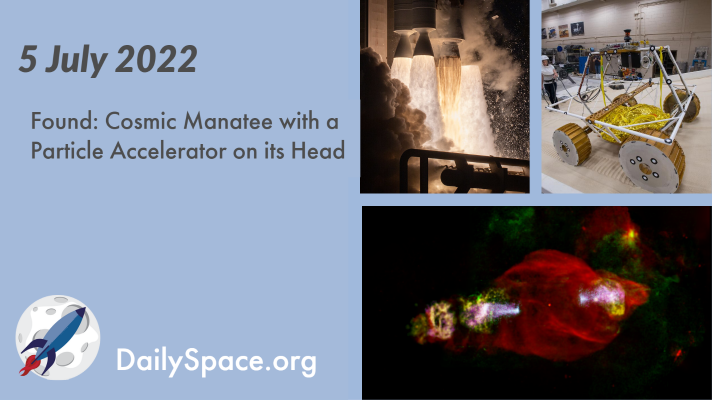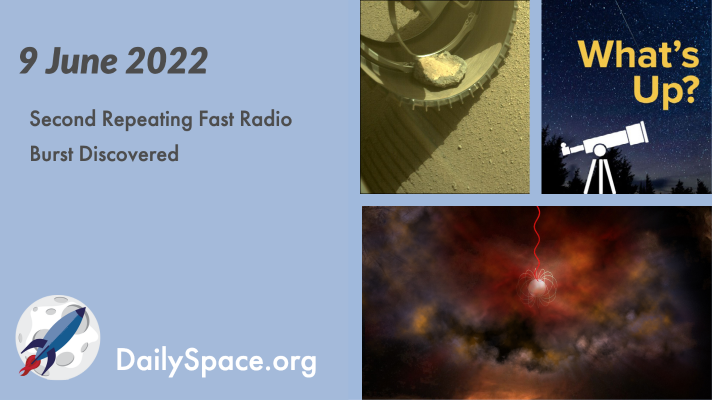
Jul 14, 2022 | Asteroids, Daily Space, ESA, Exoplanets, Neutron Stars / Pulsars, OSIRIS-REx, Rocket Lab, Rockets, ROSCOSMOS, Soyuz, Space China, Space History, SpaceX, Starlink, Vega
With the release of JWST’s first science images behind us, we now catch up on all the rocket launches of the past few days. Meanwhile, Bennu continues to be a favorite research topic and is the subject of three new papers released this week. Plus, pulsar-orbiting planets, and this week in rocket history, we look back at GEOTAIL.

Jul 6, 2022 | Daily Space, Galaxies, Mars, Moon, Nebulae, Neutron Stars / Pulsars, Rockets, Rovers, Space China, Virgin Orbit, Zhurong
Scientists observing the Manatee Nebula find that the supernova remnant contains a stellar-mass black hole that is emitting powerful, high-energy jets, creating the strange, double-lobed shape. Plus, rocket launches, mission updates from Mars and the Moon, and a spinning galaxy from the early universe.

Jun 22, 2022 | AAS, Daily Space, Galaxies, Neutron Stars / Pulsars, Rockets, Spacecraft, SpaceX, Star Forming Region, Starlink, Stars, Supernovae Remnants, White Dwarfs
Researchers using the Chandra X-ray Observatory have found that a known pulsar is moving through a supernova remnant at over one million miles per hour. Plus, the life and death of stars, new pictures of the Large Magellanic Cloud, and all of the SpaceX rocket launches.

Jun 10, 2022 | Daily Space, Fast Radio Bursts, JWST, Mars, Neutron Stars / Pulsars, Perseverance, Rockets, Sky Watching, Space Policy, Spacecraft, SpaceX, Starlink
A second repeating fast radio burst was detected in 2019 by China’s FAST observatory and confirmed in 2020 by the Very Large Array. This latest discovery raises the possibility that there are two different types of FRBs. Plus, a SpaceX commercial launch, mission updates, neutron stars, and this week’s What’s Up.

May 25, 2022 | Daily Space, Earth, Fast Radio Bursts, Galaxies, Lucy, Neutron Stars / Pulsars, Planetary Nebulae, Spacecraft, The Sun
Fast, strong magnetic winds caused by quickly rotating pulsars may be accelerating particles like electrons to extremely high-energy states and creating gamma-ray photons in their wake. Plus, missions close to home, large and distant objects, some pretty Hubble photos, and laser simulations of fast radio bursts.

May 6, 2022 | Daily Space, Neutron Stars / Pulsars, Science, Sky Watching, Supermassive Black Holes, The Sun
The flash of a pulsar about 3,000 light-years from our solar system was caused by a ‘black widow’ binary consuming a smaller star. Intriguingly, a third companion star is orbiting the pair, which may have originated near the Milky Way’s center. Plus, the Sun is ramping up, Chandra releases more sonification videos, and this week’s What’s Up is all about occultations.








 We record most shows live, on Twitch. Follow us today to get alerts when we go live.
We record most shows live, on Twitch. Follow us today to get alerts when we go live.